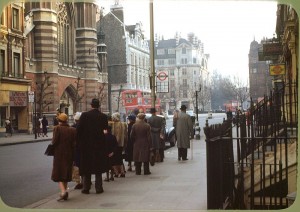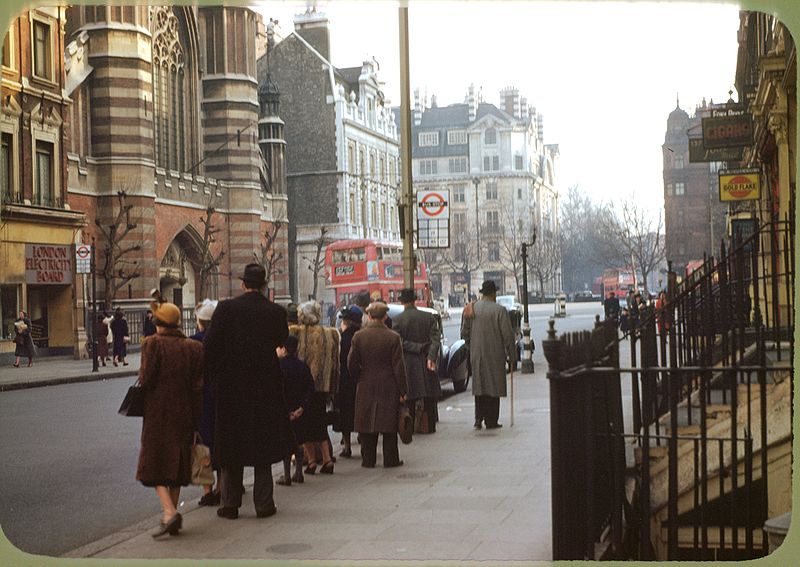We chose the Baby Belling as our benchmark cooker because there’s a good chance that that, or something better, will be available to you. But what if you end up living for an extended period with no cooking facilities at all? How do you keep yourself alive and healthy in those circumstances?

After all, it happened to me. In the early 1990s, I moved into a room in a Chelsea hotel for six months.
It was more of a cupboard than a room, and the hotelier was letting it out as a crashpad over the winter because he had insufficient demand to fill his better rooms, let alone this cubicle. For me, still a very young man, it was ideal: it came equipped with bed, television and sink, work was a short walk away and I had friends in the area. But the inescapable fact was that there were no cooking facilities of any kind.
Nor were some of the usual resorts easily available. The nearest chippy was half an hour away by foot. The one cheap restaurant in the area – the famous Chelsea Kitchen – wasn’t the kind of place you’d want to eat in alone, and in any case, it fed many of my poorer customers, and I felt entitled to time away from them. I could rely on a meal out once or twice a week – occasionally in the Kitchen, or perhaps curry, or perhaps the excellent French rotisserie in South Kensington. There’d be the occasional work pub lunch. For the rest, I was on my own, with only knives, boards, plates, cutlery and a kettle for company.
So I was forced to look around and really consider what resources were open to me. First, food shops: and I was lucky here, being almost across the road from Partridge’s in Sloane Square. Partridge’s was grocer to the Chelsea set, which meant that it had more than the usual supermarket array of finger food, baked goods and canned food. In particular, given my small budget, their bottled new potatoes would prove a useful top-up of carbohydrates in a hurry, plated with a little fresh mint and a simple dressing of olive oil and lemon juice.
What’s more, Partridge’s offered something important but intangible: feelgood labels and carrybags. In a less than ideal situation, such as the hobless, ovenless, fridgeless state I found myself in, the century-old badge of a grocer with a Royal Warrant brought with it considerable comfort and reassurance.
Within walking distance, I also had Waitrose and what was then Safeway, now Morrison’s. That meant easy daily access to fresh salad vegetables, which, as I had no storage facilities, was going to be crucial. Some items – fruit, pickled vegetables, oils, vinegars, canned fish, canned pulses and hardier vegetables like avocado and radishes, could be hung away in string or muslin bags. But there was always going to be a daily shop for those more fragile, but delicious, essentials that would have to consumed immediately.
What I didn’t have, back then, was an independent baker, or an ethnic food store, both of which I’d be keen to track down were this situation to arise for me again.
So what can you eat, if you can’t cook?
Let’s begin with drinks. I’m assuming you have a kettle. Proper coffee is tricky, but far from impossible – if you don’t own a cafetiere, a coffee jug and tea strainer, or a cone filter, can substitute. Tea is as usual. It’s also worth considering cup soups – try the Japanese miso soup varieties with seaweed, as these are of far higher quality than anything British. Bovril, of course, for those who like it, and hot chocolate. Herbal tea is as usual, and if you have a source of fresh mint, it really is worth using that instead of a tea bag.
Your best bet for breakfast is fruit. Start with apples and bananas, then use the opportunity to explore more unusual types of fruit if they are available to you. With some fruit, varieties can prove interesting – try Egremont Russet apples in season, for instance, or try the different kinds of pears.At some times of the year, milk can keep well in a plastic bag hung out of a window, and that opens up cereals to you if you wish.
Butter, or other forms of spread, are trickier: if you are willing to give it a try, then you can make sandwiches in the conventional way. But it’s far easier to use bread as a dip in cup soups, or as something to moisten in a saucer of olive oil having rubbed it first with a clove of garlic. Black and green olive pastes last quite well if kept cool. Use them as dips and spreads.
Salads are a mainstay. Keep everything scrupulously clean. Shake olive oil together with lemon juice and French mustard in a jar to make a dressing that should last two to three days at room temperature. A cucumber or tomato base is as good as lettuce or other leaves. Consider growing your own sprouts in a jar. Canned potatoes can bulk the meal out – this is very much a bread and potatoes situation. Add avocados for essential fats and a touch of luxury: add salad onions for bite, radishes for freshness and houmous – if you can find a small one-shot tub – for velvet.
Keep a jar of sundried tomatoes handy, and bottles of chili sauce, to add warmth when required.
Scottish oatcakes are astonishingly filling: spread honey on them, or buy a single soft goat’s cheese: this will also go very well with them.
Every so often, buy a small hunk of French blue cheese and bring it home with as fresh a baguette as you can, and eat them with a good bottle of wine.
Some canned combinations work well. Tuna is a perfect flavour match for flageolet beans. Just drain, mix together and anoint with olive oil.
Cans of chickpeas are also worth having around. Try pouring boiling water over a mixture of couscous, dried sour cherries and Marigold bouillon powder. When the couscous is tender, squeeze it out, and stir in the chickpeas.
Cold beef slices from the supermarket are a good base for an interesting meal. Nigel Slater recommends tossing vinaigrette (that salad dressing you made earlier) with cold beef, flageolet beans, rinsed capers, new potatoes and french beans. All of these are available in packets or cans. Or, chop a Cox’s apple, a small sweet onion and some watercress, and toss with the beef and a dressing made from yoghurt, honey mustard, cider vinegar and the juice and zest of a small orange.
Simple staples can wake up a takeaway more than you might imagine. Make your own chili oil and add it to a pizza. The famous Edinburgh “sottensauce†on fish and chips is merely a blend of brown sauce and malt vinegar, but is well worth trying.
Small luxuries mean a lot in these conditions. This is not the time to refuse yourself wine with a meal, if you can afford it. Or, where appropriate, try a different bottled beer or lager every day. Keep a bottle of whisky handy for later in the evening. And invest in snacks: something delicious but slummy, like Wotsits, or affordably expensive, like Kettle Chips or garlic breads.
Having no cooking facilities is an extreme situation and no joke, but it doesn’t have to bring about a suspension in your culinary life. As I have said, I lived this way for six months. I emerged healthy, the same weight I was going in, and possessed of an excellent set of wine-tasting notes I’d made on my passage through. Not good! like so much in the garreteer life. But not the end of the world either.

